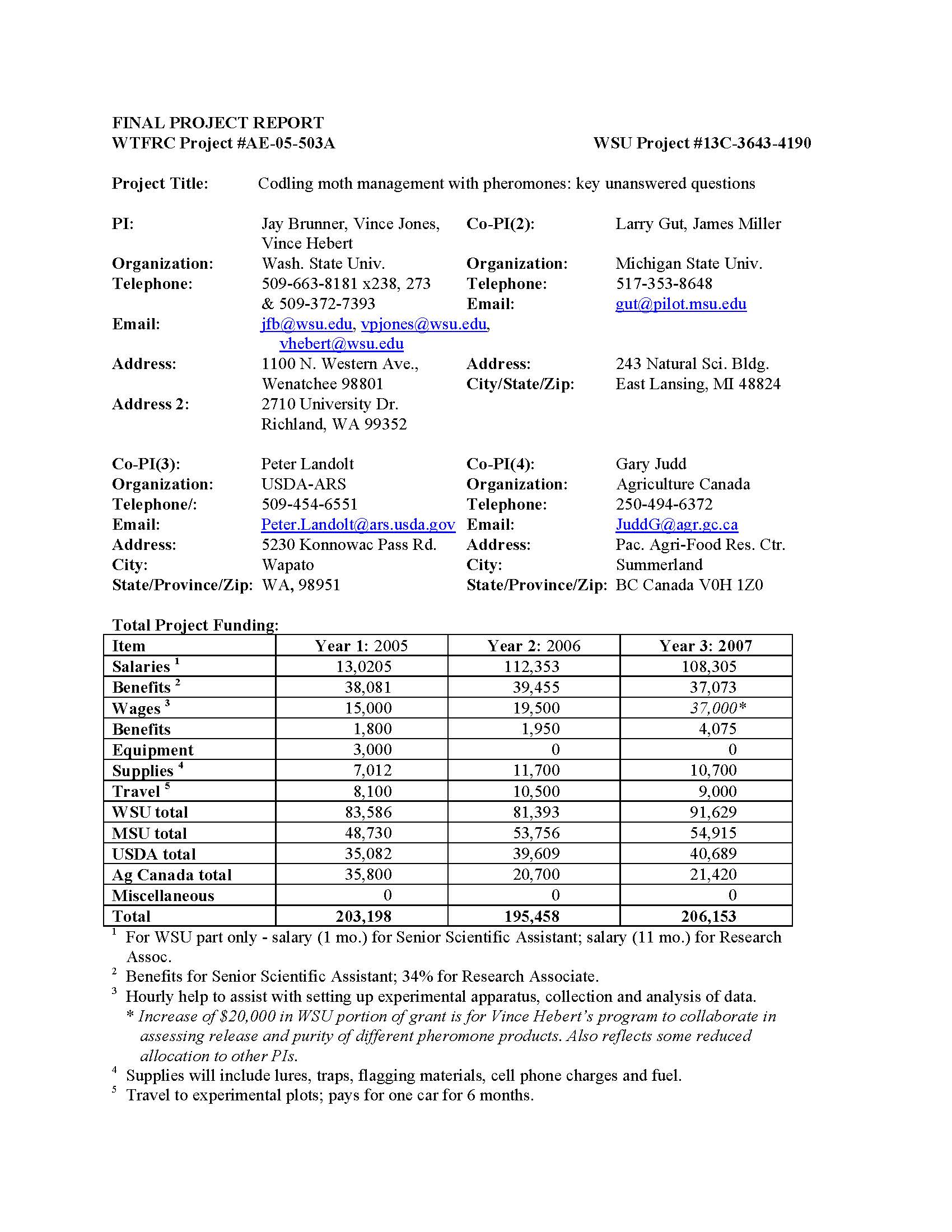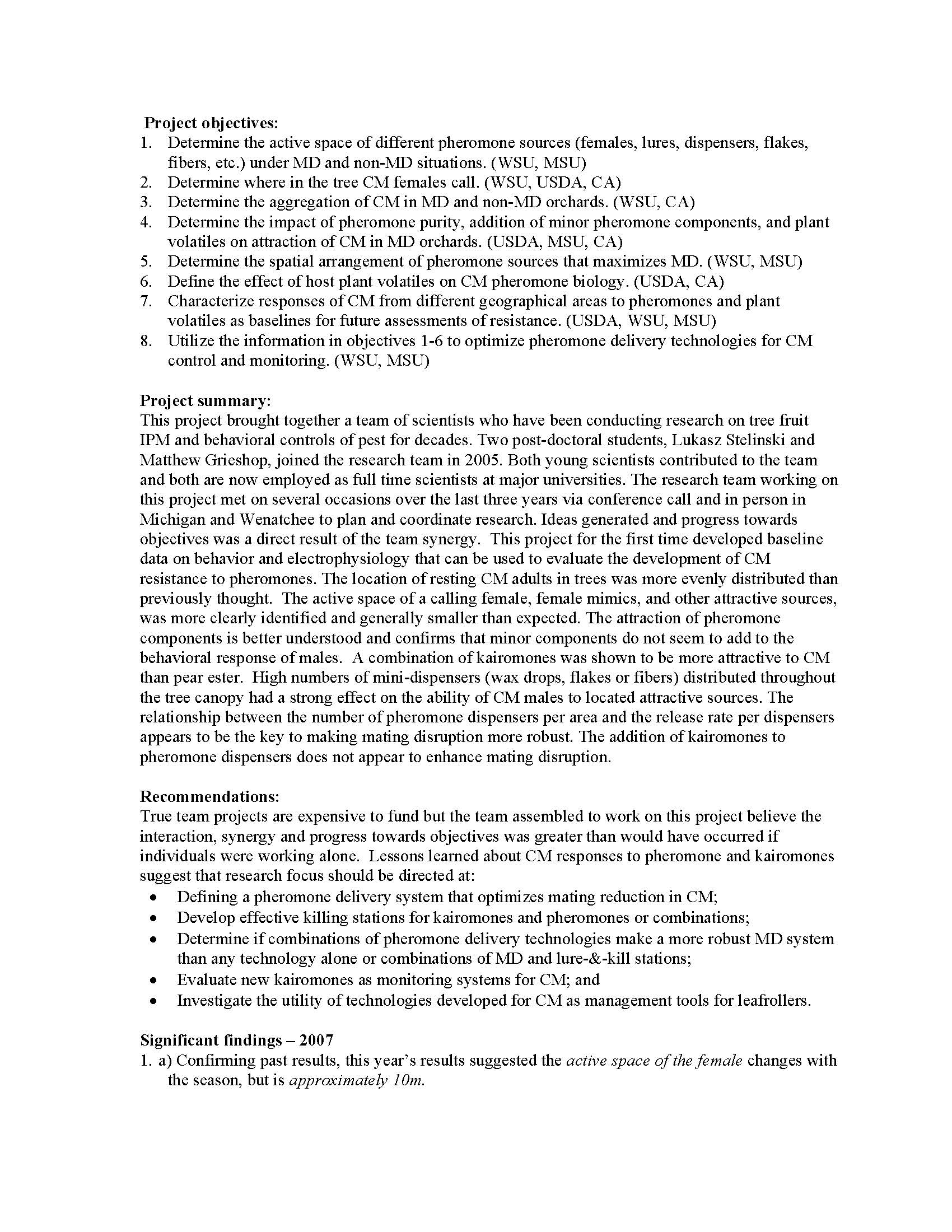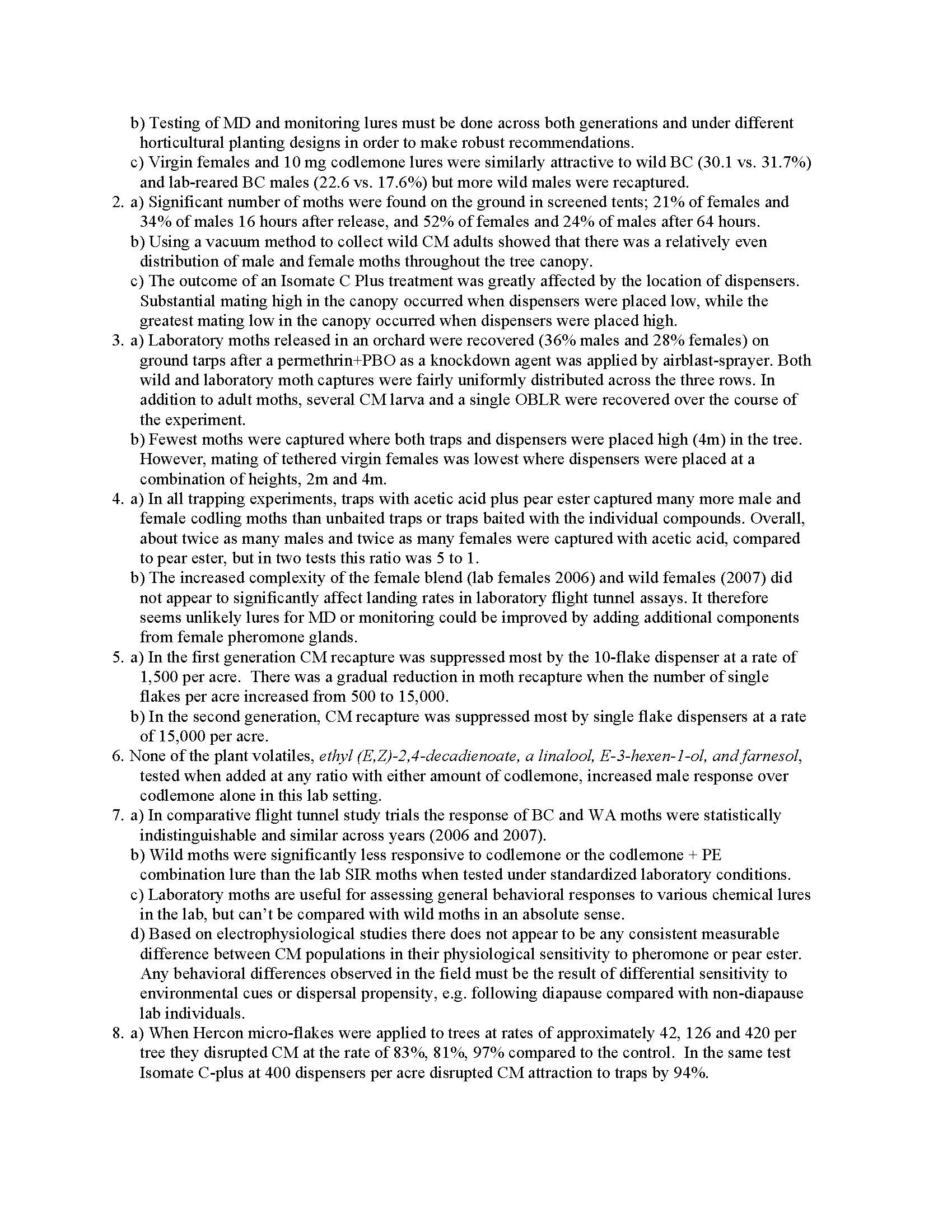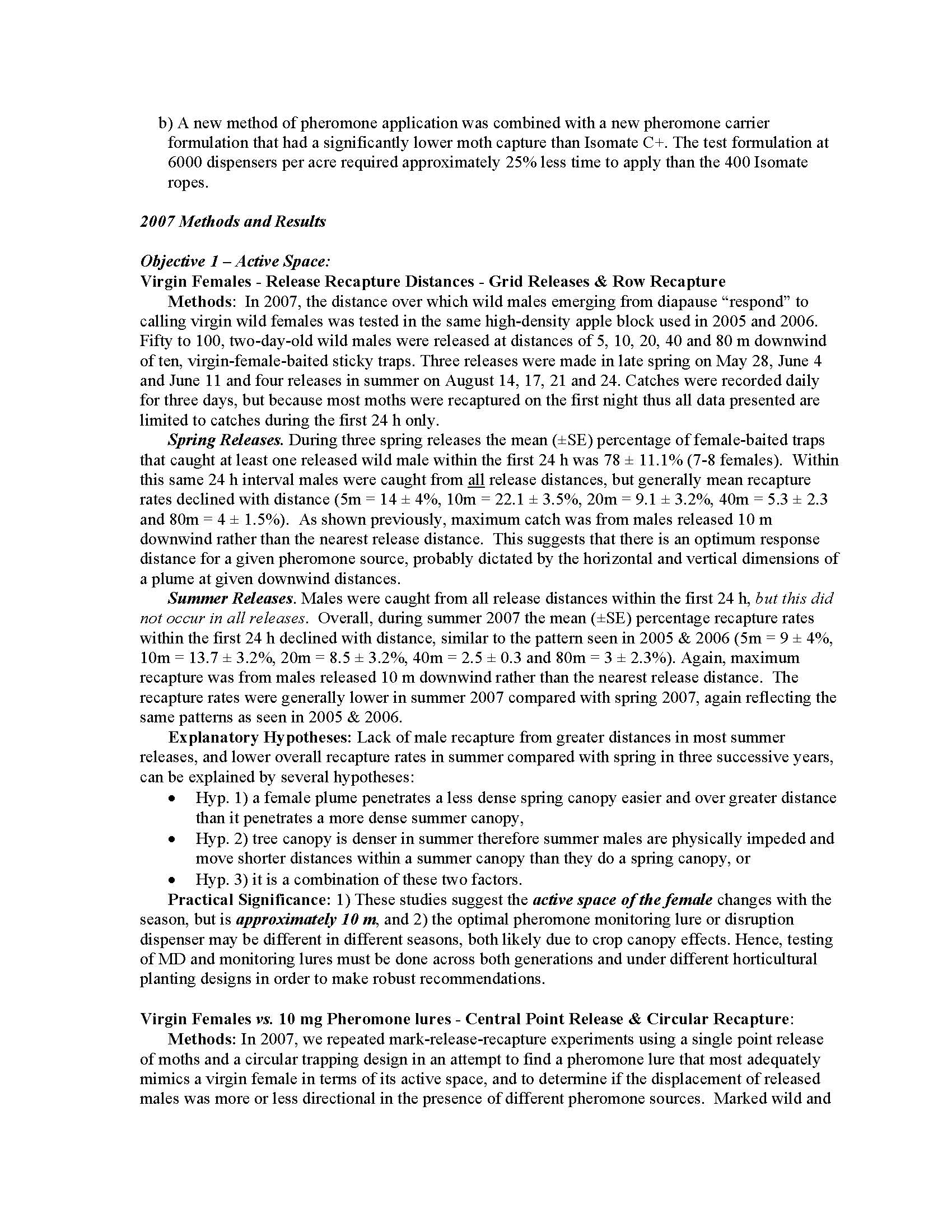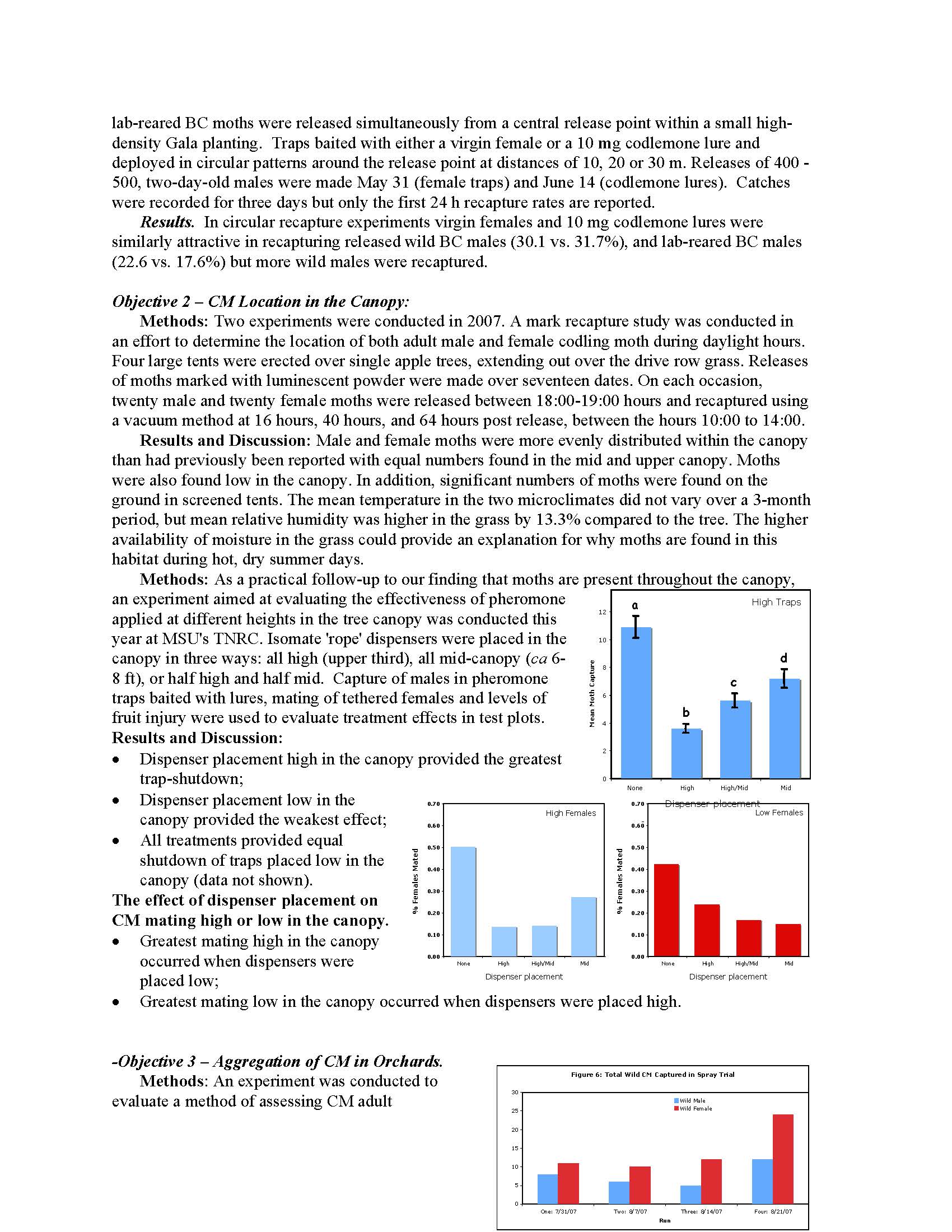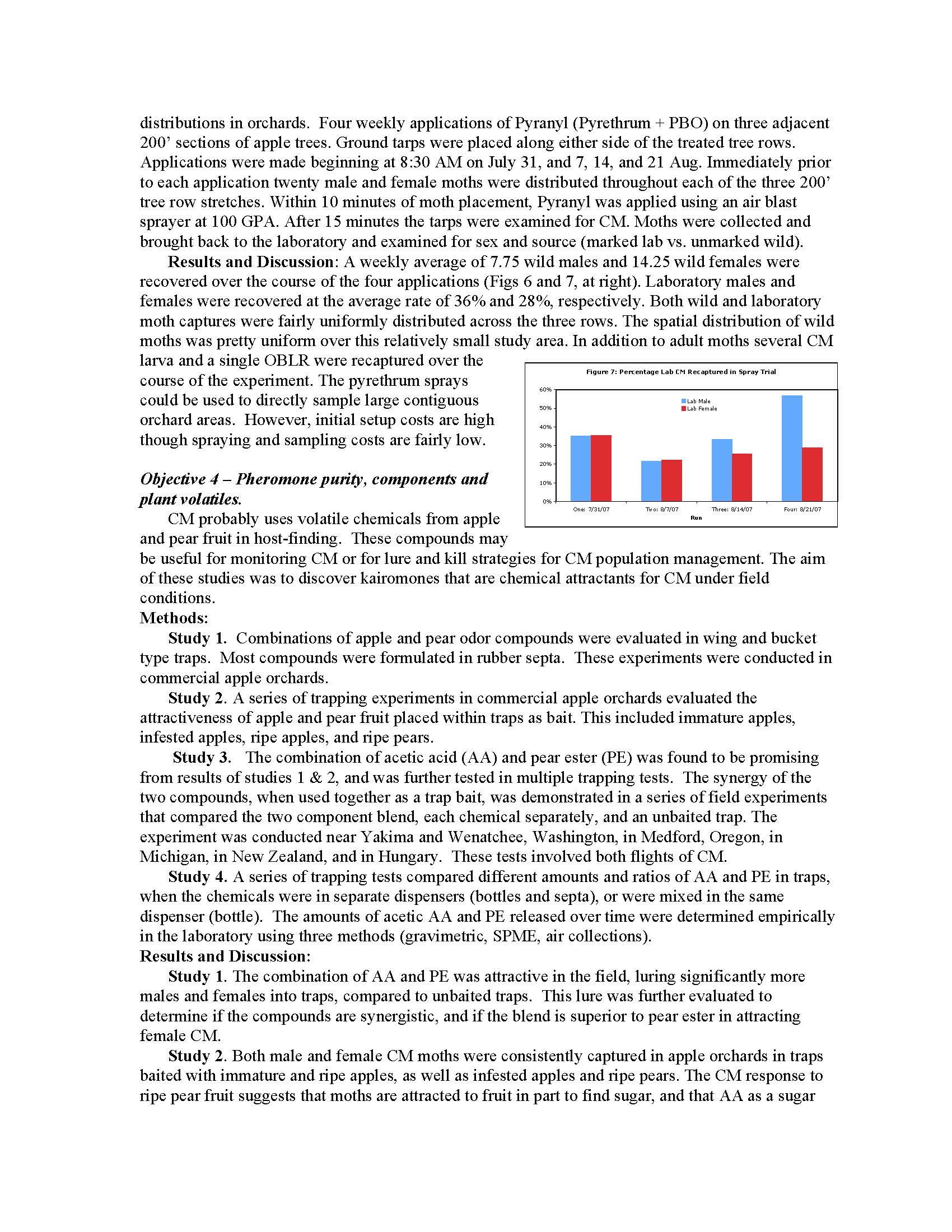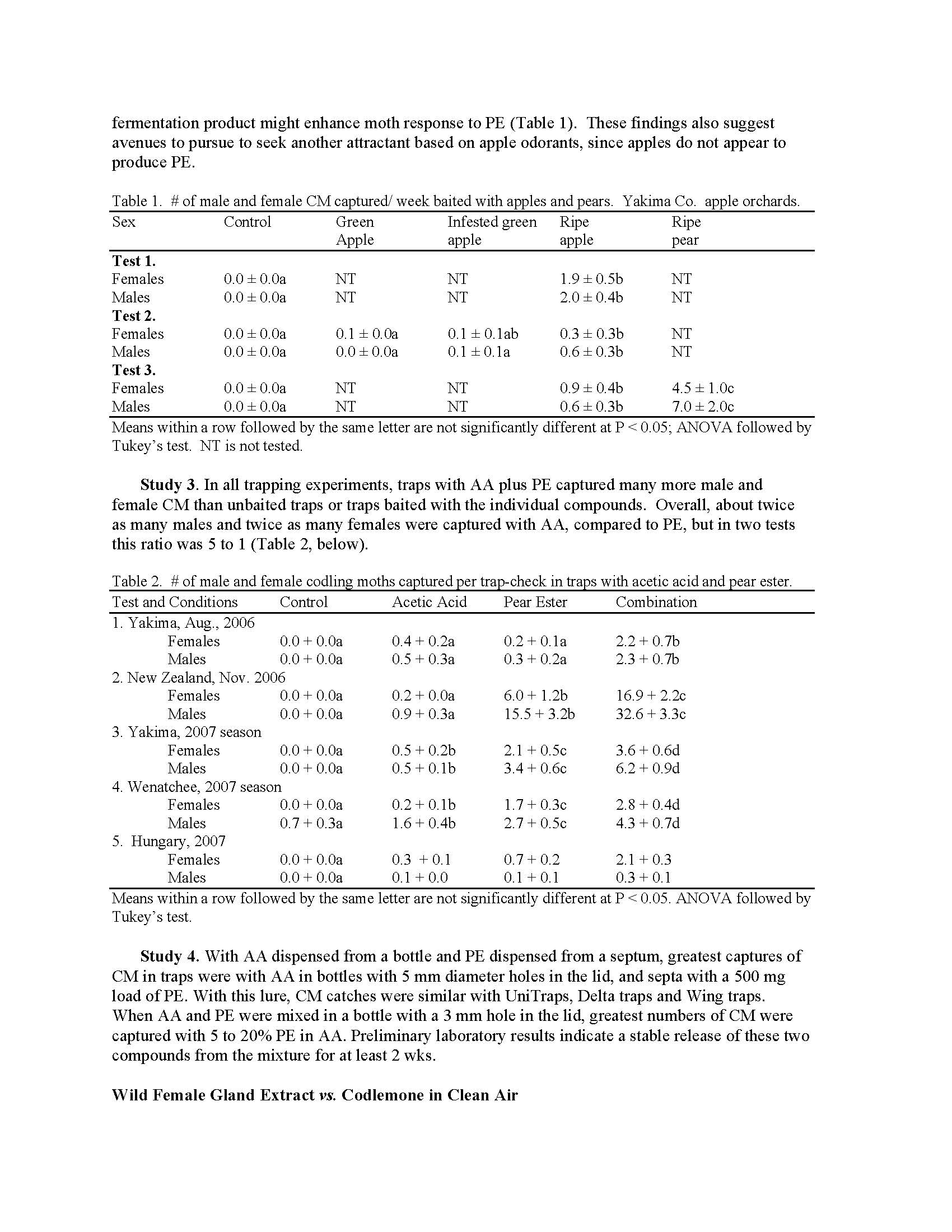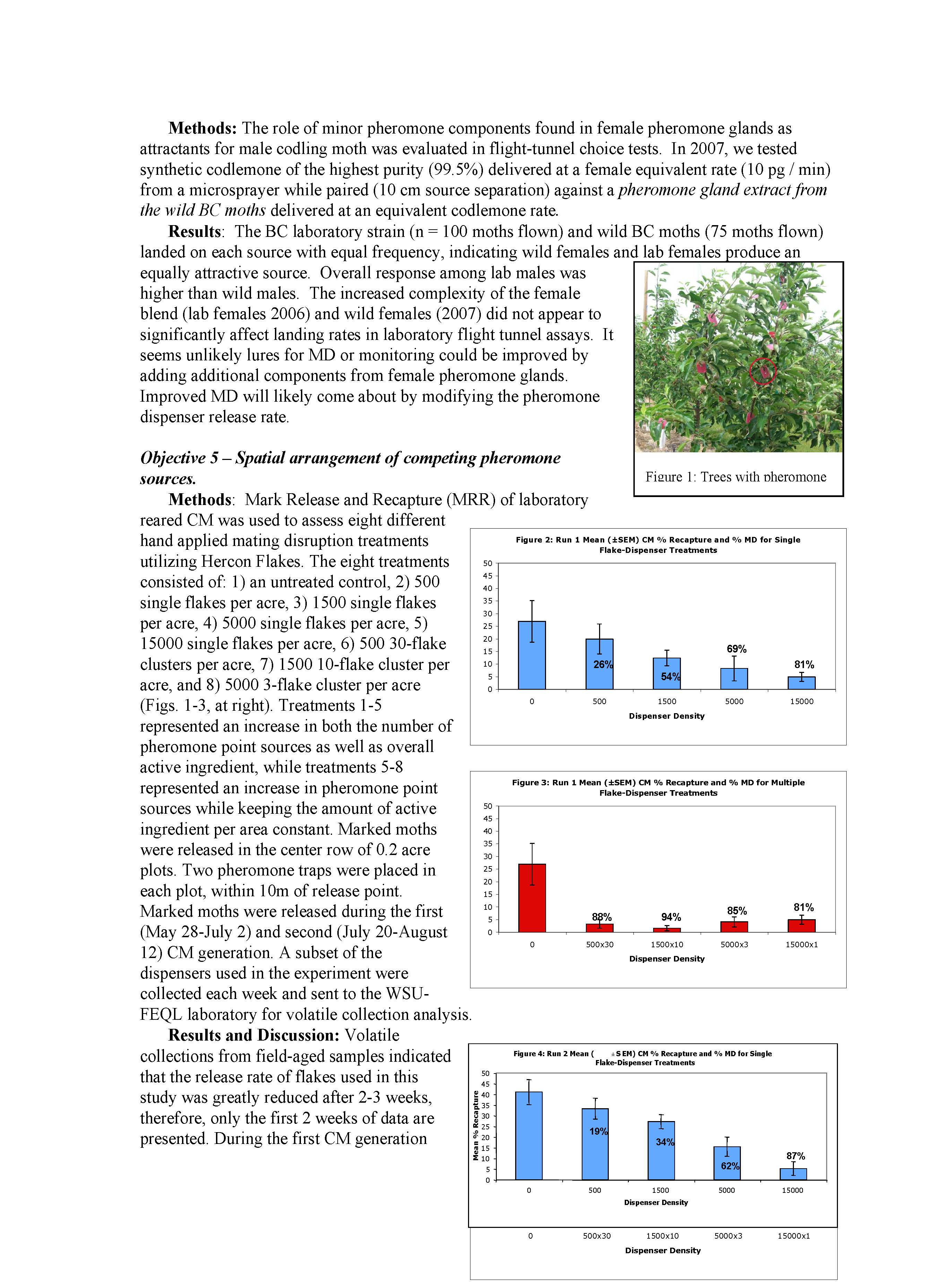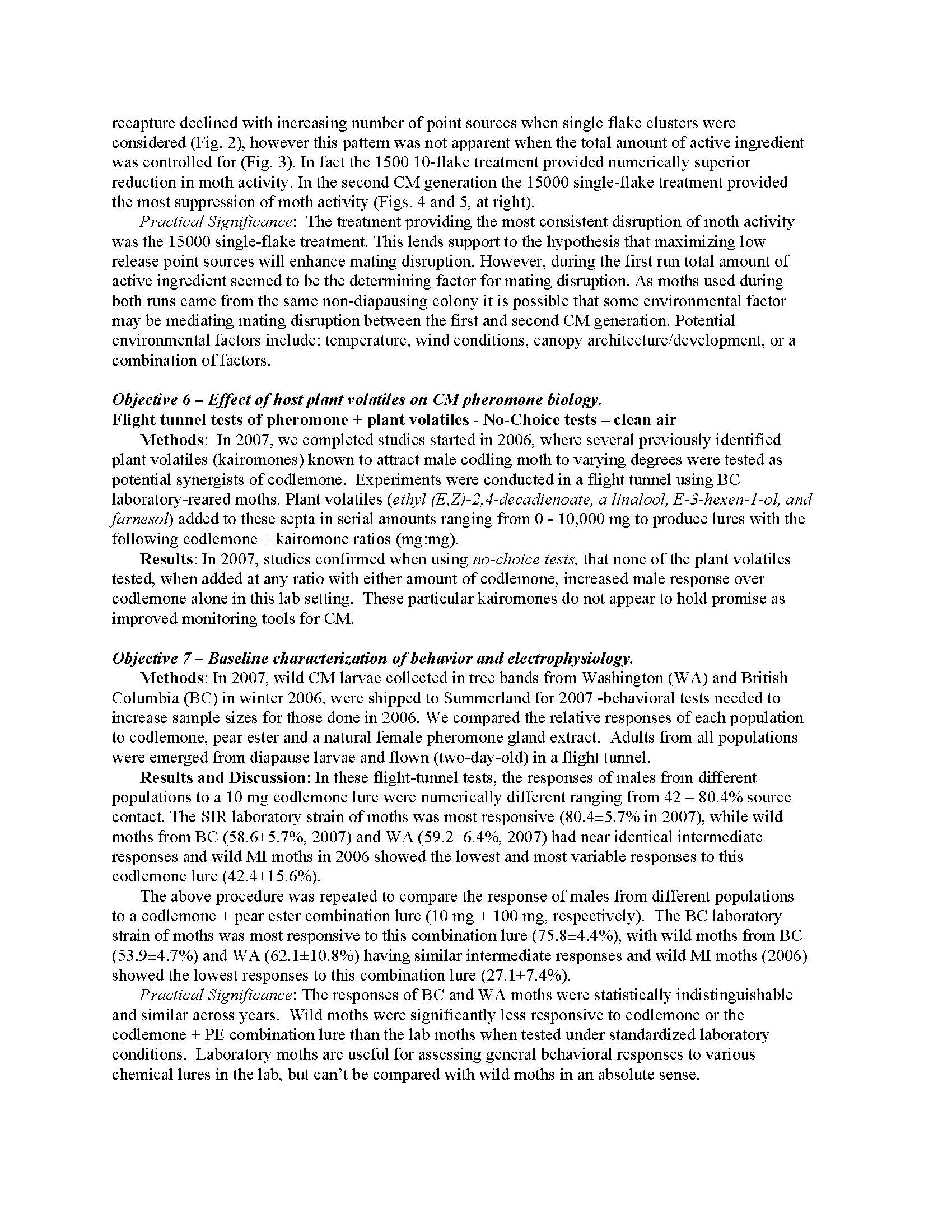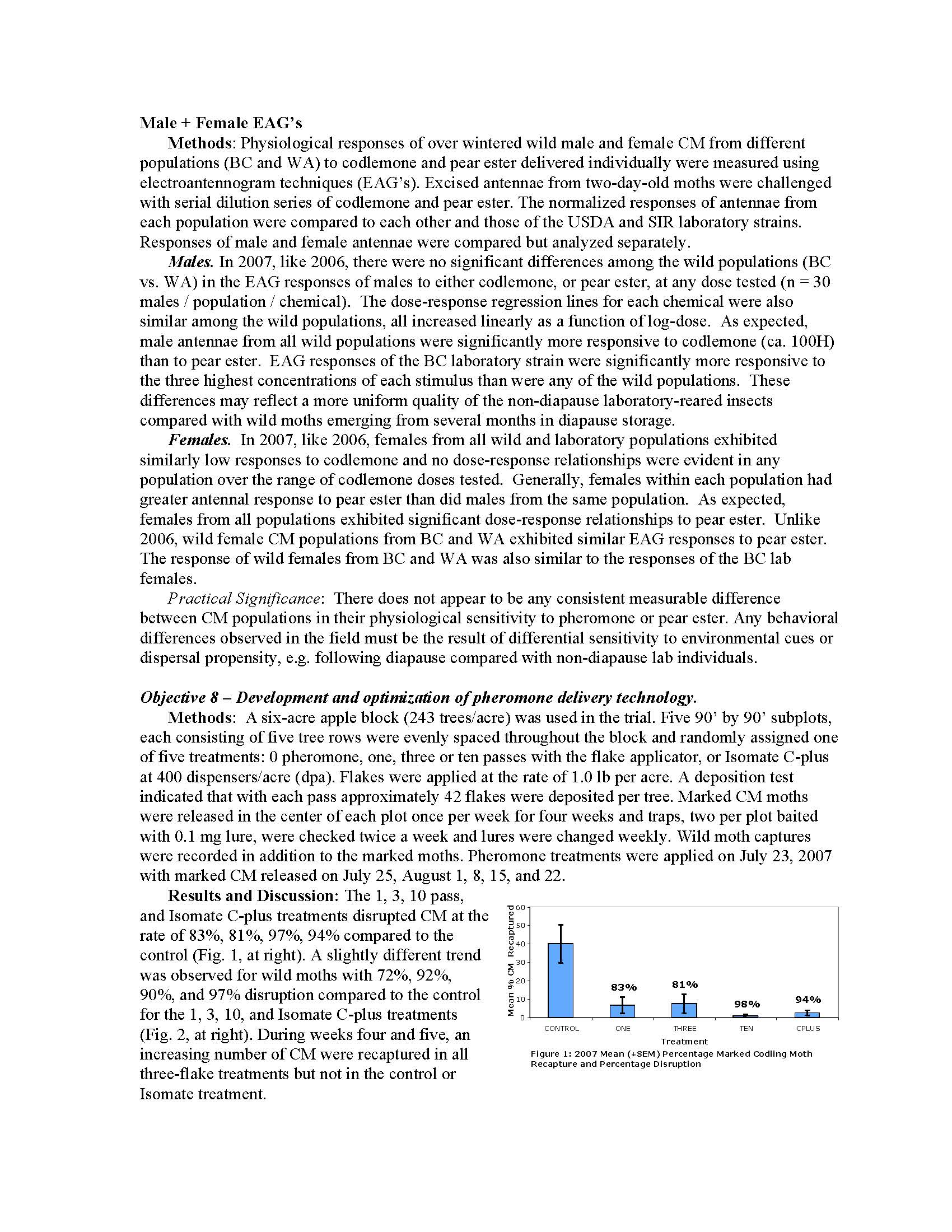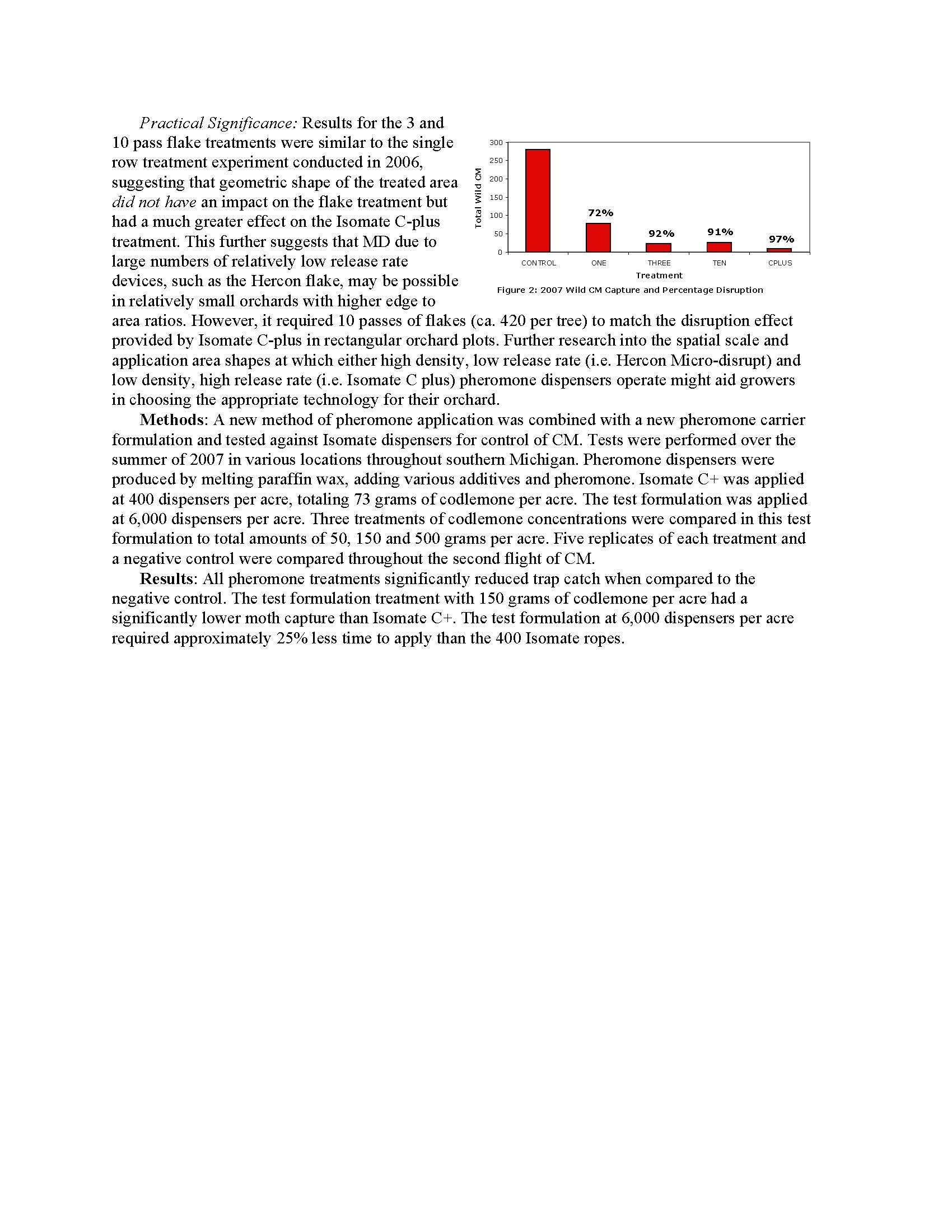Codling moth management with pheromones: key unanswered questions
Author: Jay Brunner, Vince Jones,Vince Hebert, Larry Gut, James Miller, Peter Landolt, Gary Judd
Published: 2007
Summary: This project brought together a team of scientists who have been conducting research on tree fruit IPM and behavioral controls of pest for decades. Two post-doctoral students, Lukasz Stelinski and Matthew Grieshop, joined the research team in 2005. Both young scientists contributed to the team and both are now employed as full time scientists at major universities. The research team working on this project met on several occasions over the last three years via conference call and in person in Michigan and Wenatchee to plan and coordinate research. Ideas generated and progress towards objectives was a direct result of the team synergy. This project for the first time developed baseline data on behavior and electrophysiology that can be used to evaluate the development of CM resistance to pheromones. The location of resting CM adults in trees was more evenly distributed than previously thought. The active space of a calling female, female mimics, and other attractive sources, was more clearly identified and generally smaller than expected. The attraction of pheromone components is better understood and confirms that minor components do not seem to add to the behavioral response of males. A combination of kairomones was shown to be more attractive to CM than pear ester. High numbers of mini-dispensers (wax drops, flakes or fibers) distributed throughout the tree canopy had a strong effect on the ability of CM males to located attractive sources. The relationship between the number of pheromone dispensers per area and the release rate per dispensers appears to be the key to making mating disruption more robust. The addition of kairomones to pheromone dispensers does not appear to enhance mating disruption.
Keywords:

